Top chief information officers are focusing on cloud technology, AI and data, and their relationship with the C-suite, according to a new survey.
MIT Sloan Management School
Sara Brown
Aug 2, 2021
Chief information officers have played a crucial role in companies’ digital transformation efforts, including integrating vital new technologies into the workplace.
Now the CIO role itself is evolving, according to a new survey of more than 500 CIOs from professional services firm Genpact and the MIT Sloan CIO Symposium.
Survey results reflect the evolution of the role; where CIOs were once value-delivery engines, they’re now co-creators of new business models, said Sanjay Srivastava, chief digital officer at Genpact.
“One of the things I frequently hear from CIOs is that technology is no longer the long pole in the tent,” Srivastava said during a panel discussion at the MIT Sloan CIO Symposium this spring.
There are still technology tasks to be done, like setting up data lakes or cloud computing. But technology is no longer the hardest part — transformation is, as leaders manage people, processes, data, and technology.
“If you look at data and information technology, generally, it’s never been more relevant around the boardroom table,” said Rogan Moore, the chief digital and information officer at Livekindly Collective, a collection of plant-based brands and startups.
Working more directly on digital transformation means
- a focus on cloud infrastructure, data analytics, and artificial intelligence,
- as CIOs learn from — and educate — other executives, and focus on hiring the right people.
Here’s a look at what top CIOs said about the evolution of their role.
- CIO ‘pilots’ are leading the way
- New areas of focus: the cloud, data and AI, and hiring
- CIOs who are part of the C-suite are most effective
1.CIO ‘pilots’ are leading the way
According to the survey, CIOs tend to fall into one of three categories:
- Pilots
- Co-pilots
- Flight engineers
Pilots are at the top of their field and drive transformation for their companies. They build new business models and embrace digital technology, and they are ready to support growth for the business.
Pilot CIOs innovate with cloud technology and prioritize artificial intelligence and machine learning.
About 22% of CIO survey respondents fell into this category.
One of the things I frequently hear from CIOs is that technology is no longer the long pole in the tent.
Sanjay Srivastava Chief Digital Officer, Genpact
Co-pilots collaborate and work hand-in-hand with their business counterparts and stakeholders to build the model for the future and transform the business.
Co-pilots are modernizing their application stack to deliver new capability.
About 61% of the CIOs would be considered co-pilots.
Flight engineers deliver value by taking direction from other leaders and stakeholders. Engineers are often in catch-up mode when it comes to things like cloud technology.
Just 17% of CIOs are in this category.
The ability to support business growth sets pilot CIOs apart from others, Srivastava said. While most of the pilots said they are ready to support business growth, only 44% of survey respondents overall felt that way.
The COVID-19 pandemic has jump-started innovation, creativity, and a sense of urgency for many companies, according to Aarti Shah, who recently retired from her role as senior vice president and chief information and digital officer at Eli Lilly and Co., the pharmaceutical company.
“We were able to meet the moment that was in front of us,” she said. “Now we need to continue that momentum, take advantage of this significant exploration and adoption that is ongoing.”
New areas of focus: the cloud, data and AI, and hiring
“The tools of the trade are changing,” Srivastava said.
Data and analytics programs are surrounded by systems that are agile, quickly deployable, and ready for integration via application programming interfaces.
The old system based on core pieces of technology, such as banking systems or enterprise resource planning, is less important.
CIOs are focusing on three key areas:
- The cloud and hyperautomation
- Data analytics and AI
- Upskilling and hiring
The cloud and hyperautomation.
The survey found 40% of CIOs said that automation is helping their businesses adapt to changing business conditions.
And the cloud is ubiquitous with 100% of CIOs saying they’ve already started to adopt the cloud, or will be starting to do so in the next 12 months.
Data analytics and AI
CIOs are involved in their firms’ efforts to not just boost data analytics and AI programs, but to build data literacy throughout the company.
In the survey, 82% of CIOs said they’re spending a lot of time building a culture of data-driven decision-making.
CIOs play a key role in demystifying new technology, Moore said.
“The role I see of the CIO is to take the fear away,” he said, by explaining how things like machine learning and blockchain work. “It’s taking away the mystery and the craziness and the ‘magical’ elements of the tech industry and making it real for people.”
Upskilling and hiring.
Focusing on data and analytics and AI requires upskilling employees so they’re able to fully embrace it.
According to the survey, 49% of CIOs said they don’t have sufficient talent inside their companies, and they are relying on external providers to help with hiring employees who have experience with AI and cloud systems.
Companies that are in early stages of digital transformation especially prize employees who combine these skills with business knowledge .
CIOs who are part of the C-suite are most effective
The survey found that CIOs who report to the CEO, and meet with them regularly, are most successful at driving strategic change.
CIOs who are part of the executive team are able to champion technology and advocate for how it will drive digital transformation and bring better business results, Shah said.
The CIO should also help boost the digital IQ of the C-suite, said Shamim Mohammad, executive vice president and chief information and technology officer at CarMax.
Mohammad said he took his company’s CEO on a tour of the data center, followed by a “data safari” of sorts, visiting other companies to see the possibilities of innovative technology.
Relationship-building doesn’t end with the CEO, Mohammad added.
Beyond the C-suite, “We have a responsibility to make sure we have a great relationship with the board of directors as well,” he said. “Because by forming a strong relationship and partnership, and a communication channel with the board, we are also supporting the CEO in many ways.”
Originally published at https://mitsloan.mit.edu on July 28, 2021.
Original Report:


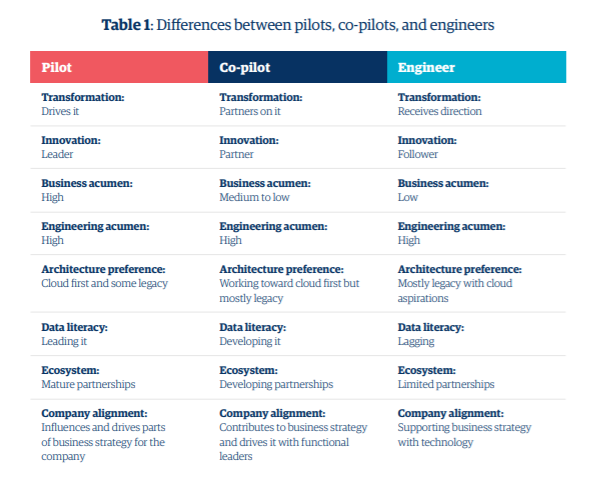
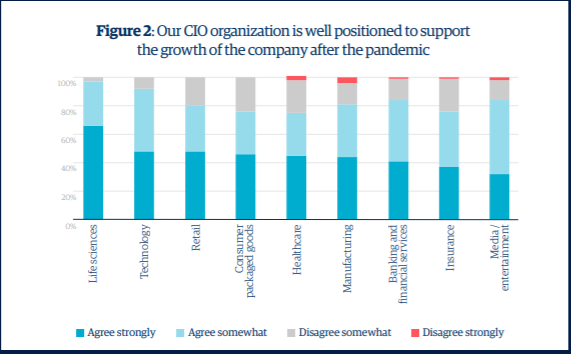







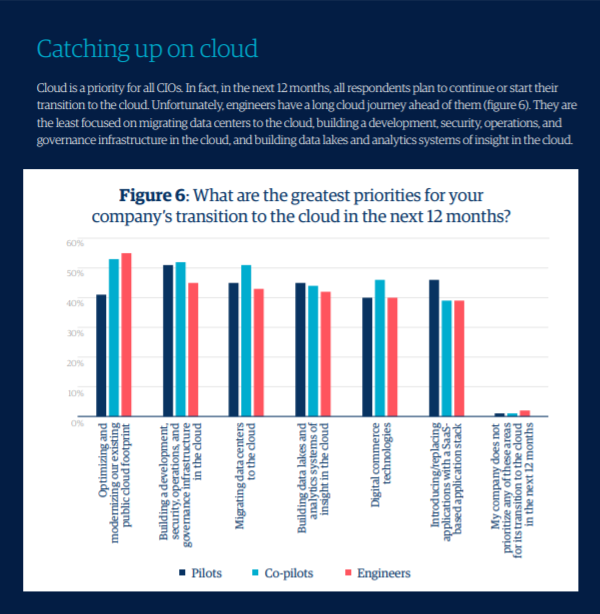


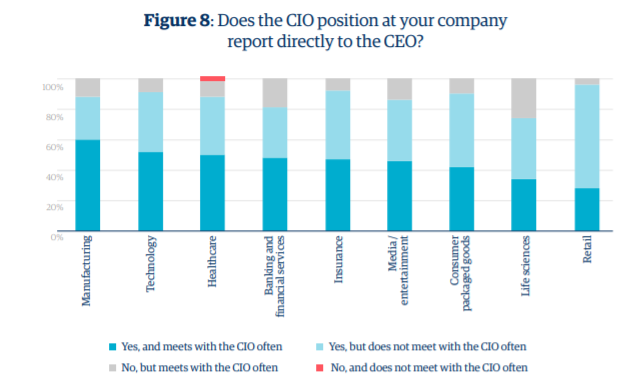
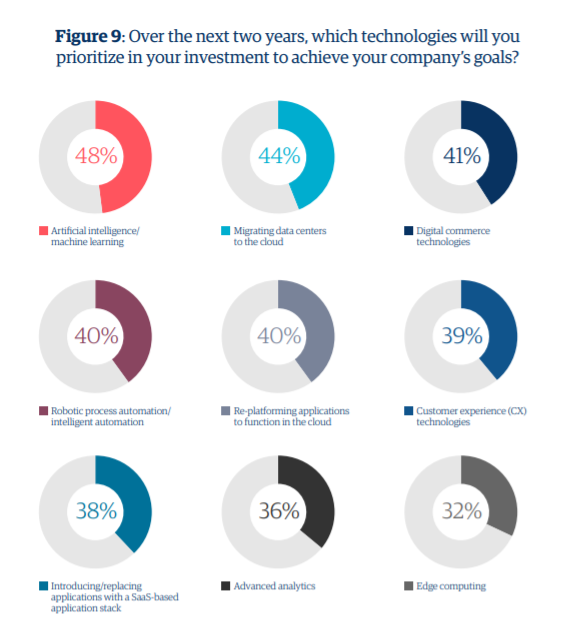
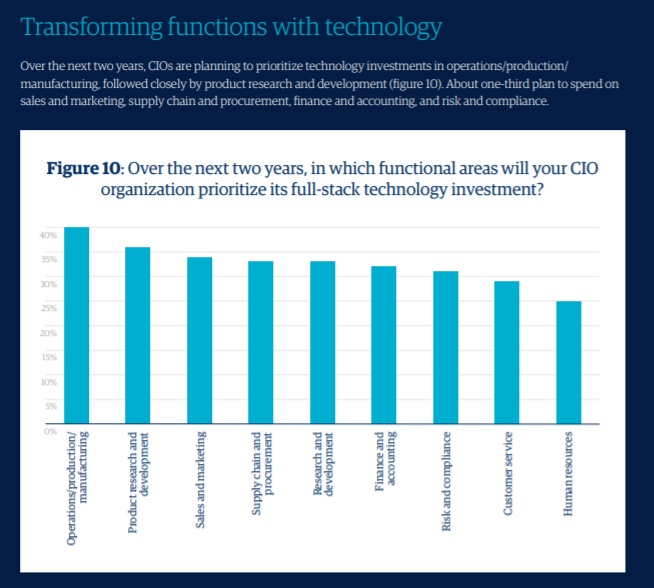
PDF version








